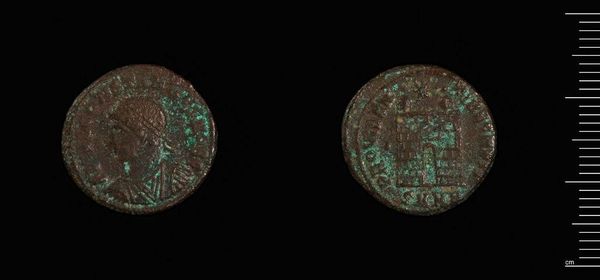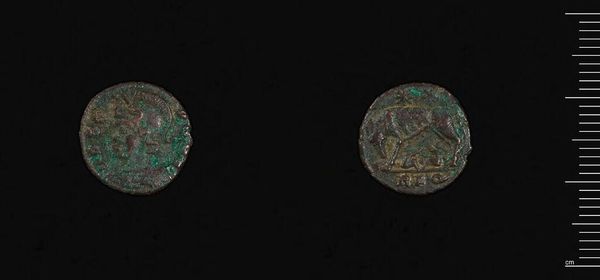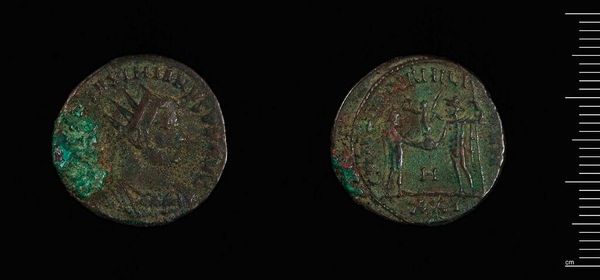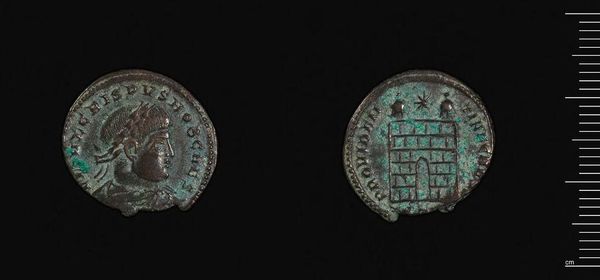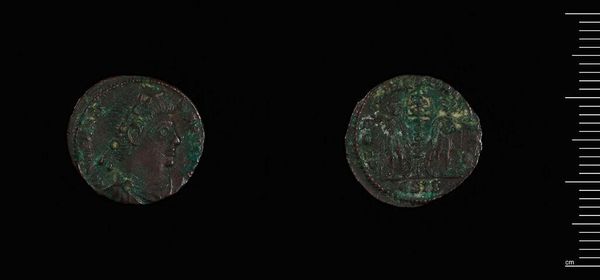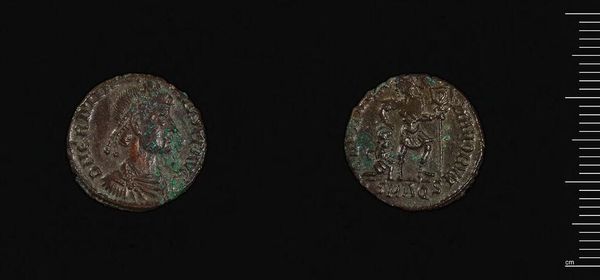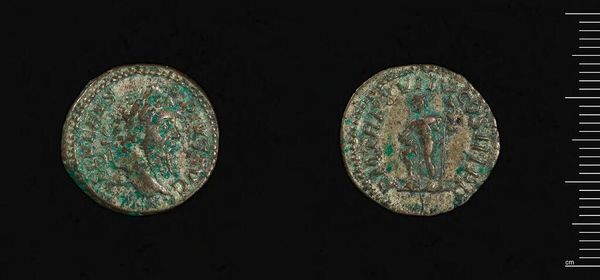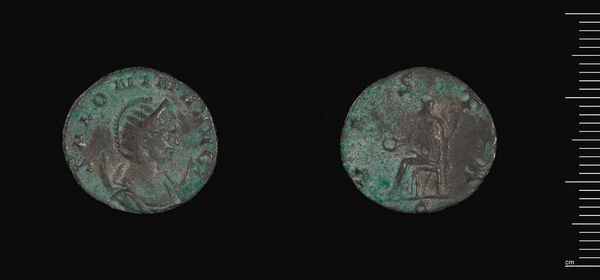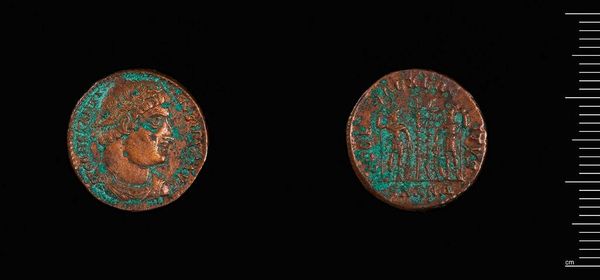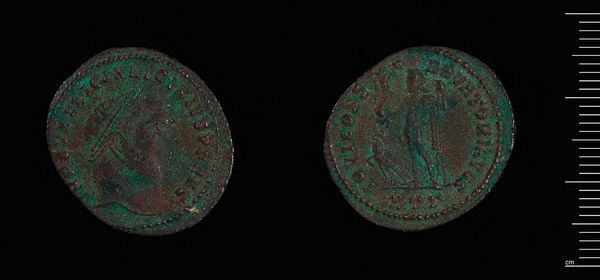
Dimensions: 4.11 g
Copyright: CC0 1.0
Editor: Here we have a coin of Constantine I, a small bronze piece at the Harvard Art Museums. It’s heavily patinated, and I find it fascinating to consider how many hands it must have passed through. What stories do you think it holds? Curator: This coin is more than just currency; it’s a potent symbol of power, inextricably linked to the rise of Christianity and the consolidation of imperial authority. Constantine used coinage as propaganda, disseminating his image and legitimizing his rule. The images and inscriptions speak volumes about the social and political forces at play. Editor: Propaganda, even then? So, its purpose wasn't just transactional? Curator: Precisely. Consider how such a small object could project power throughout the vast Roman empire. It connected people to an image, an idea, and a system, contributing to a shared identity, for better or for worse. It's a reminder that even the smallest objects can be powerful agents of social control and transformation. Editor: I hadn't thought of it that way. It makes me consider the power of images and symbols in our own lives. Curator: Indeed. Examining historical artifacts allows us to critically examine the construction and maintenance of power structures that persist today.
Comments
No comments
Be the first to comment and join the conversation on the ultimate creative platform.
